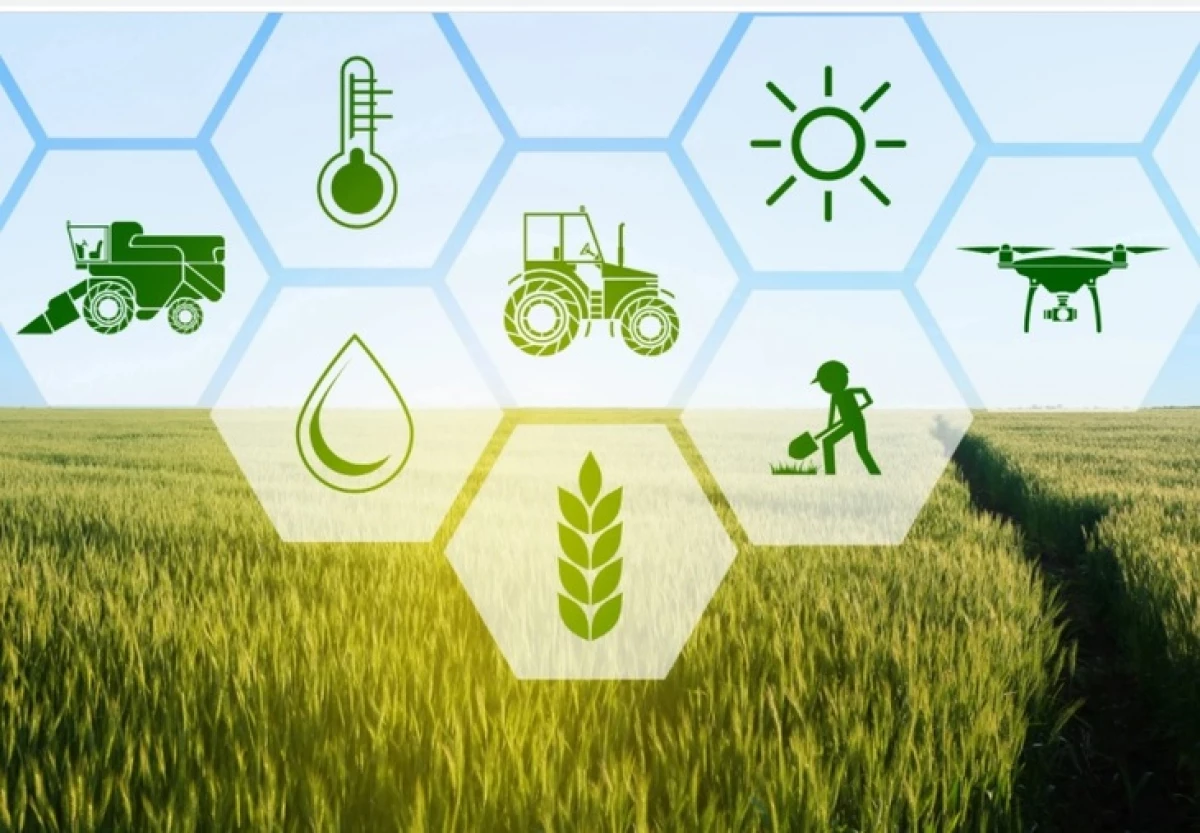
Women roll
Today, brains, not muscles, is a new key to the success of the farm, since the technology significantly reduces the gender gap. In addition, since farmer families are becoming less and less, all farmer children receive the same education and experience in the fields. The technology turns the idea that work in the field is "only for boys", in the past.According to Mr. Barnes, 2021 will be a breakthrough year for women in the agricultural industry. Farmers EDGE more and more women occupy key posts in areas such as digital technology, installation of equipment, programming.
In Russia, examples of women who have successfully made a career in agricultural business are also sufficient. Thus, the Holding "Agrosil" has been headed by Svetlana Barsukov for many years, Evgenia Uvorkina, Ex-Chairman of the Board of the GC Trio (since 2019 - Head of the Lipetsk Administration), Elmira Iratova, Commercial Director of Schelkovo Agrocheim CJSC) and many others. Women not only lead to companies or divisions, but also willingly master traditional male specialties in agriculture, for example, the mechanizer. In Russia's championships, women are increasingly acting about themselves. In 2017, Students of the Bashkir Agrarian University of Aliya Yakupov, Gulnaz Yakupov and (student students of the Bashkir State Agrarian University), Gulia Isydavletova from the Zaralsky agro-industrial college showed a high class in the management of the tractor and received awards. Aliya Yakupova was recognized as the best among women. At the next open championship of Russia in perspective title "Queen Plow" and the participation of women mechanizors has already become a tradition.
Reducing nitrogen emissions
In 2021, we can see new rules for nitrogen oxide. Although nitrogen oxide is less common than carbon dioxide, it is 300 times more harmful to the environment and its amount in the atmosphere grows. Agriculture is one of the largest suppliers of this gas, since it is a by-product of applying nitrogen fertilizers.
Experts believe that in 2021 we will see the active implementation of applications that will help determine - how many fertilizers need to be added to feed the plants, and reduce nitrogen emissions. Evidence that the agricultural producer reduced its nitrogen needs, becomes even more important. A partial limitation of solid carbamide fertilizers may be introduced and the production of nitrogen fertilizers with inhibitors stabilizing the harmful emissions.
Carbon compensation
Without a doubt, the so-called "carbon credits" in the amount of $ 30-50 per acre will begin to operate in a number of countries. Such money will definitely attract the attention of manufacturers.Agriculture has been working with carbon loans for ten years within small pilot programs. In 2021, we see wider interest and activity throughout North America, both from government agencies and from large corporations.
Those who want to get carbon loans will turn to their digital tools and the farm management platform to collect the necessary data from their fields to easily monitor and execute reporting requirements. And consumers will pay more, knowing that the farmer does everything to protect the environment.
Consumer demand will also make carbon compensation attractive. More consumers are worried about where their food is taken from. If the product network starts selling their bread as "produced on farms that reduced carbon dioxide emissions", this bread will cost more, but consumers are ready to pay more.
Seating from sowing before the push
Vegetable food is growing all over the world, and it is expected that by 2024 its volume will exceed $ 35 billion. Signs this tendency to growing consumer demand for accurate knowledge of where food came from how it was grown, prepared and delivered.
People will rely on digital tools that tell in detail how rich in protein culture (such as rapeseeds, lentils and peas) were grown, gathered and transported to the consumer with the help of automated audit reports. This information will also allow manufacturers to receive prizes for cultures that meet strict quality standards, including organic and GMOs that do not contain.
Manufacturers will actively use digital tools to determine which cultures will be grown, where they are planted for the best crop and how to manage supply and demand to help prevent the lack of specific cultures.
Digitalization of agriculture
Pandemic COVID-19 showed the fragility of our global supply chains. But at the same time he awakened in consumers an understanding of the importance of agriculture. People coped with the lack of toilet paper and office furniture, but the lack of food (even if it did not happen really) worried more. A pandemic taught people all over the world to appreciate farmers, and it is awesome.
In 2021, agricultural producers will become even more "digitized". Farm platforms for electronic interaction with partners, insurance agents and bankers will be actively used instead of meeting face to face. The US Department of Agriculture, for example, under pressure a pandemic changed its position in relation to Insurtech digital tools. The US Department of Agriculture demanded that insurance agents and brokers be faced to face with agricultural producers. Now officials appreciated the advantage of safe, remote interaction during agricultural insurance.
In 2021, manufacturers will implement digital technologies on their farms to a faster pace and use farmers for electronic interaction with partners, insurance agents, bankers, consumers for business.
Maria Wind
When preparing the article, Future Farming Information, Modern Farmer, Ministry of Agriculture of the Russian Federation, Ministry of Agriculture of the Republic of Bashkiria are used.
